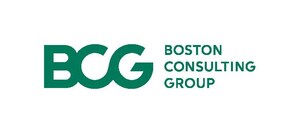Although States and Districts Have Acted Swiftly, More Is Needed to Close the Digital Divide, a New Analysis Finds
Report from BCG, Common Sense, and EducationSuperHighway Offers Fresh Insights and Guidance on How States and Districts Can Make Greater Progress During COVID-19 on One of America's Toughest Challenges
BOSTON, Oct. 29, 2020 /PRNewswire/ -- Last spring, when authorities closed school buildings where 50 million US students attended classes, the "homework gap" threatened wholesale learning loss. In response, school districts and states scrambled to provide devices and connectivity to their students at home. More than six months later, much can be learned from the largest and most unexpected experiment in distance learning in American history.
An analysis from June by Boston Consulting Group (BCG) and Common Sense found that 30% (15 million to 16 million) of all K–12 public school students in the US live in households that have no internet connection or lack an adequate device for distance learning. Now a follow-up report by BCG, Common Sense, and EducationSuperHighway analyzes relevant case studies and highlights best practices for closing the K–12 digital divide during the COVID-19 pandemic.
The report, titled Connect All Students: How States and School Districts Can Close the Digital Divide, is designed to serve as a guide for states and school districts, and as a tool for state and federal policymakers, businesses, philanthropies, and nonprofits. It highlights emerging best practices in three key areas:
- Assessing who needs connectivity and devices, and determining where they live
- Determining which devices and connectivity options are desirable and available, and establishing the best way to distribute them
- Funding these efforts through a combination of federal, state, local, private, and/or philanthropic funds
"States, cities, and school districts have partnered with internet service providers and philanthropy to make progress toward closing the K–12 home digital divide," says Evan Marwell, CEO of EducationSuperHighway. "Best practices that have emerged from the pandemic can inform a much-needed national strategy for closing the digital divide."
As part of its exploration of how states, cities, and school districts have reacted to the crisis, the new report identifies challenges ranging from insufficient funding to supply constraints to limited existing infrastructure. It finds that the most effective solutions are those that break down silos and enable collaboration among all stakeholders: states, districts, the private sector, nonprofits, teachers, and families.
"We have seen states and districts spring into action in a number of ways to address the urgent needs of their students," says Lane McBride, a BCG managing director and partner who leads the firm's Education, Employment & Welfare practice in North America. "While closing the digital divide permanently is likely to require sustained funding, some states and districts have also begun to lay the groundwork for sustainability by, for example, creating repeatable processes for assessing student needs."
In March, Congress passed the Coronavirus Aid, Relief, and Economic Security (CARES) Act, which allocated $13.2 billion for K–12 education and an additional $3 billion for state governors to use either on higher education or on K–12 education. These funds helped states address a wide range of unmet educational needs, including distance learning.
"Federal CARES Act funding helped to jump-start efforts, but it did not offer a coherent approach to closing the student digital divide and was insufficient to fully close it in any single state," says James P. Steyer, founder and CEO of Common Sense. "Greater direct federal investment and support are still needed to ensure that all students can participate in distance learning during the pandemic and to close the digital divide once and for all."
The report highlights seven key takeaways that have emerged from state and local efforts to close the digital divide during the pandemic:
- Although progress has been made, the K–12 digital divide persists across all 50 states.
- Closing the divide is a difficult but solvable challenge; however, school systems cannot close it on their own.
- An effective needs assessment can provide the foundation for the rapid action needed to close the divide fully.
- Closing the digital divide is an iterative process; states and districts make different decisions to achieve differing objectives.
- Both centralized and decentralized models can be effective in closing the divide.
- Although states and school districts are having an impact today, their approaches are not sustainable at current funding levels.
- Further research and analysis are needed to close the digital divide for K–12 students and ensure high-quality distance learning for all students.
A copy of the report can be downloaded here.
To arrange an interview with one of the authors, please contact Samantha Tartas at +1 201 741 6761 or [email protected].
About Boston Consulting Group
Boston Consulting Group partners with leaders in business and society to tackle their most important challenges and capture their greatest opportunities. BCG was the pioneer in business strategy when it was founded in 1963. Today, we help clients with total transformation—inspiring complex change, enabling organizations to grow, building competitive advantage, and driving bottom-line impact.
To succeed, organizations must blend digital and human capabilities. Our diverse, global teams bring deep industry and functional expertise and a range of perspectives to spark change. BCG delivers solutions through leading-edge management consulting along with technology and design, corporate and digital ventures—and business purpose. We work in a uniquely collaborative model across the firm and throughout all levels of the client organization, generating results that allow our clients to thrive.
About Common Sense
Common Sense is the nation's leading nonprofit organization dedicated to improving the lives of kids and families by providing the trustworthy information, education, and independent voice they need to thrive in the 21st century. Learn more at commonsense.org.
About EducationSuperHighway
EducationSuperHighway was founded in 2012 with the mission of upgrading the Internet access in every public school classroom in America. The organization took on this mission because it believes that digital learning has the potential to provide all students with equal access to educational opportunity and that every school requires high-speed broadband to make that opportunity a reality. Having completed our mission to upgrade schools, we pivoted our work to focus on connecting the 10-15 million students who lack home broadband. In the second half of 2020, we launched K-12 Bridge to Broadband to accomplish this in partnership with states, districts, and ISPs at scale.
Connect All Students: How States and School Districts Can Close the Digital Divide was funded in part by a generous grant from the Walton Family Foundation and by Boston Consulting Group.
SOURCE Boston Consulting Group (BCG)

Related Links
WANT YOUR COMPANY'S NEWS FEATURED ON PRNEWSWIRE.COM?
Newsrooms &
Influencers
Digital Media
Outlets
Journalists
Opted In




Share this article